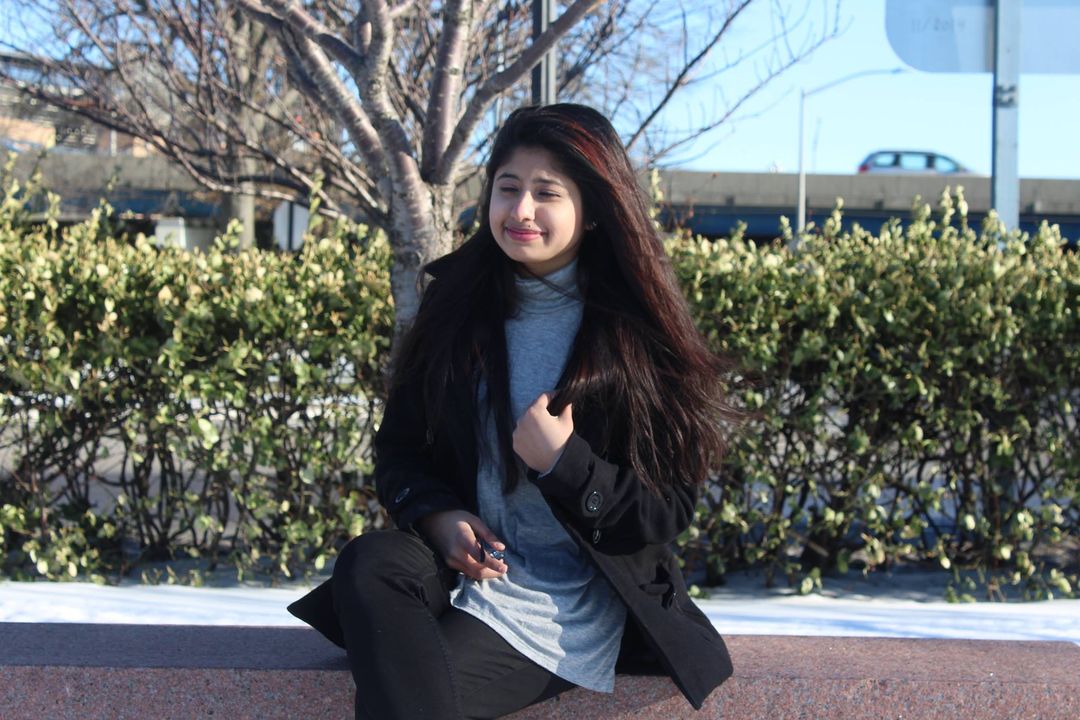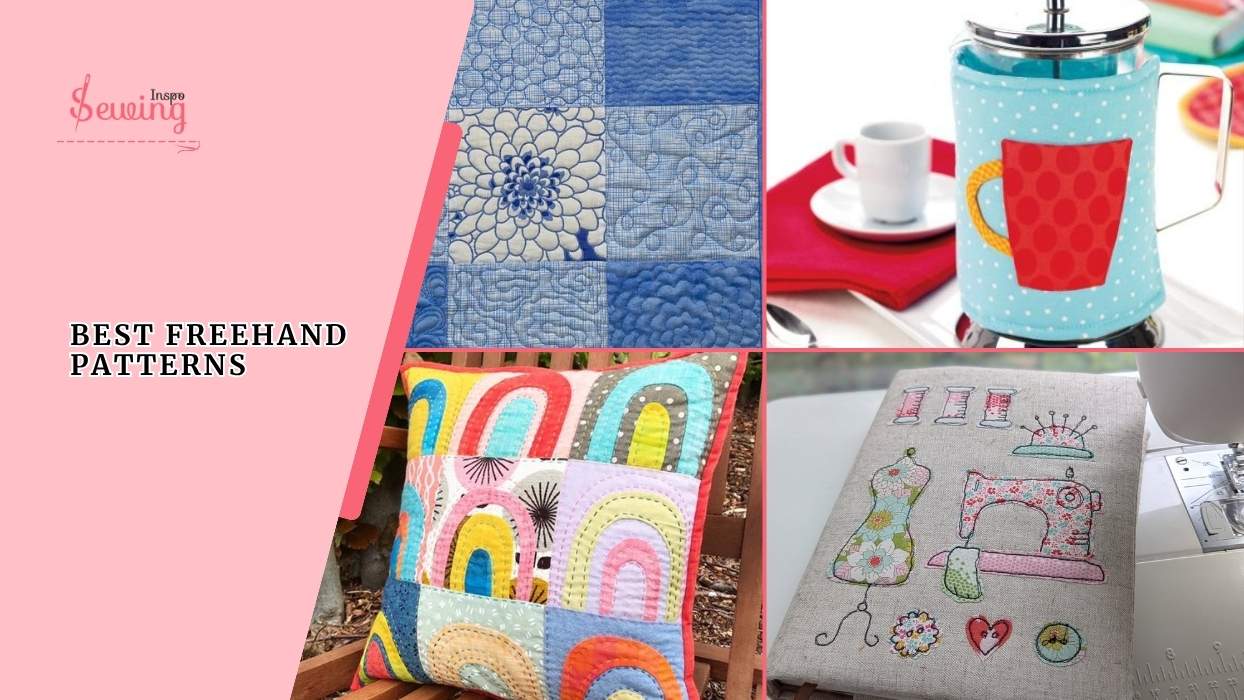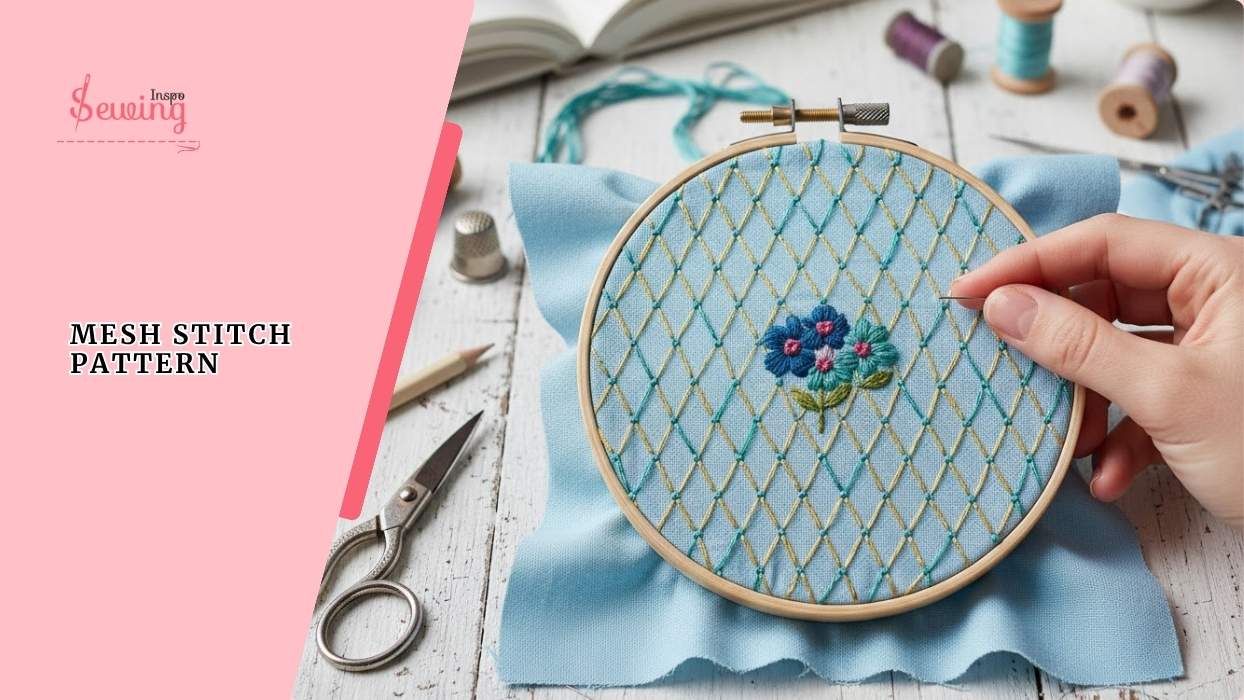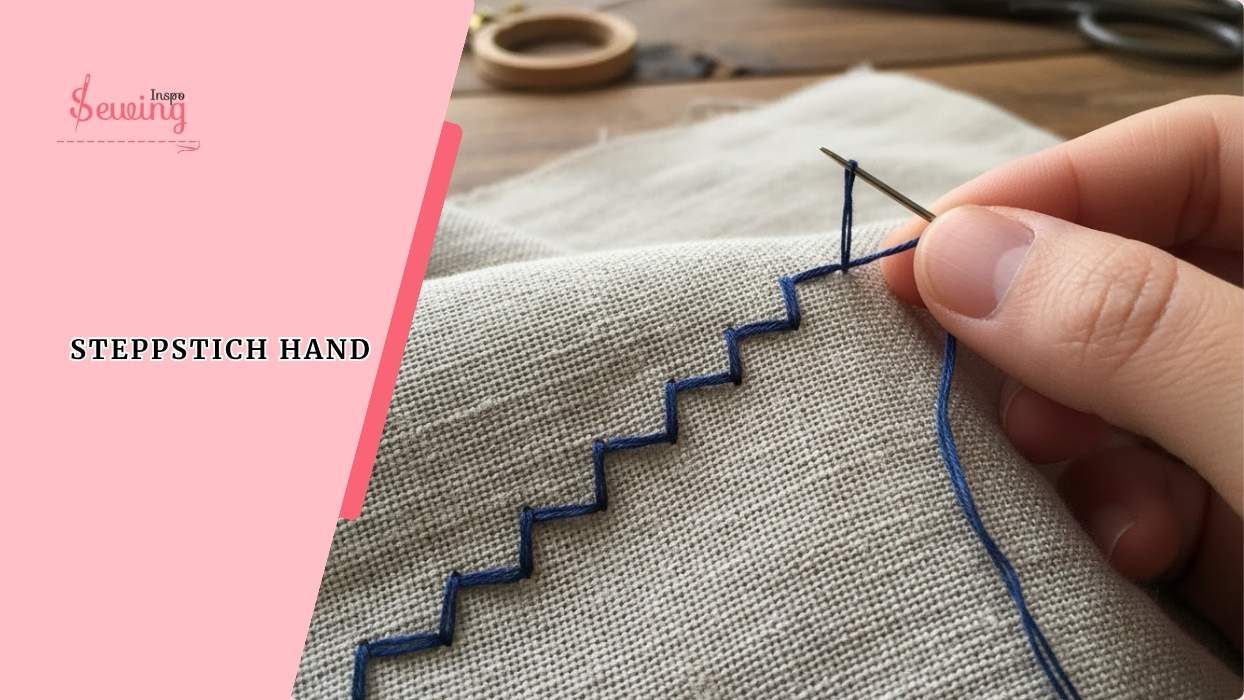I wanted to hold 2 fabrics together for a temporary time so I asked my grandma what to do with them. She said ‘You can do tacking stitches or basting stitches and there are many types of tacking stitches too. just like types of sewing stitches’
-Really? How many?
There are 15 types of tacking stitches. Some 5 examples of tacking stitches are:
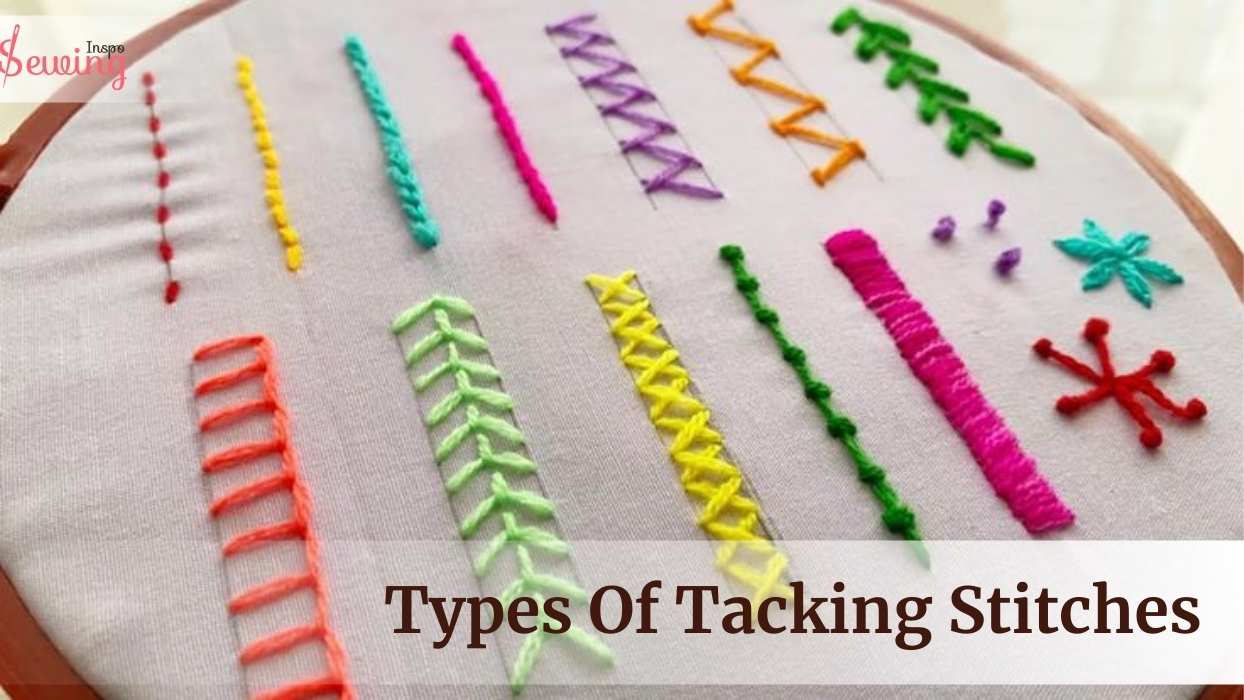
Types Of Tacking Stitches
- Regular Tacking Stitches
- Tailor’s Tacking Stitch
- Even Tacking Stitch
- Uneven Tacking Stitch
- Diagonal Tacking Stitch
What are the other types of grandma? Tell me in detail about it before knowing how to start stitch.
At A glance of the hand tacking stitch::
- A tacking stitch is a form of basting stitch.
- 14 types of tacking stitch.
- Long & short tacking stitch is a freestyle of sewing.
Table of Contents
What Is A Tacking Stitch?
A tacking stitch is a temporary stitch used to hold pieces of fabric together before you sew them permanently. This is another types of stitches sewing. Tack stitch is easy and quick. It’s like a placeholder stitch that keeps things in place while you work on the final sewing. You can easily remove it once you’re done.
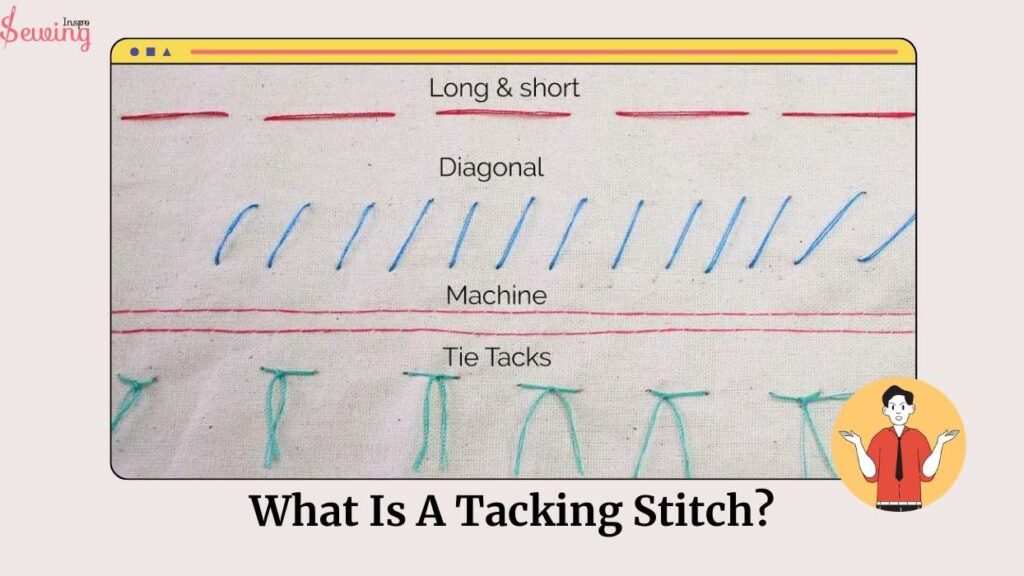
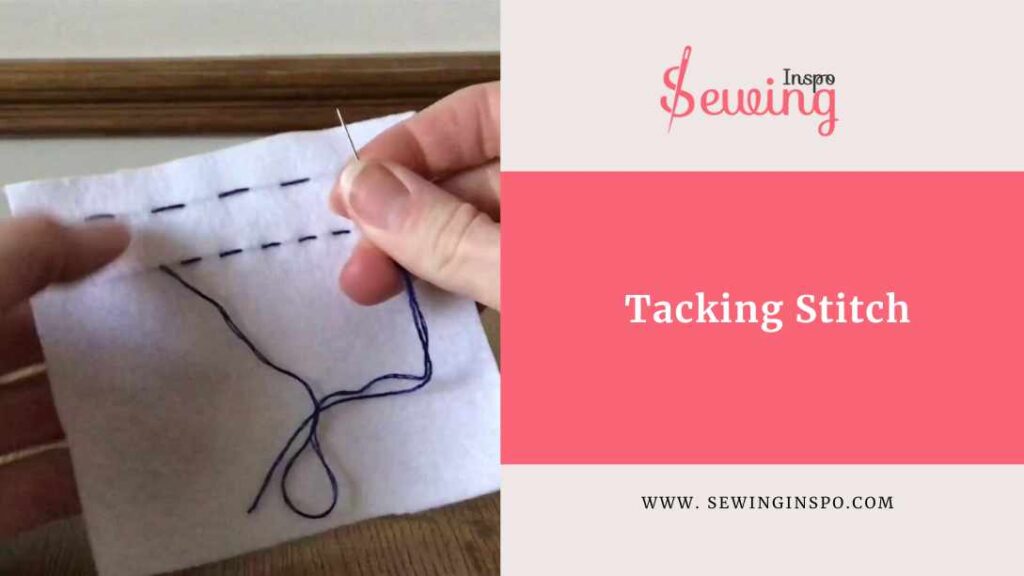
Tacking Stitch Definition
Alternatively Tacking stitch means a long loss stitch which isn’t permanent. You can remove this with just one pull. That’s why it’s only used to mark the for further embroidery.
Tacking stitch isn’t just one temporary stitch. There are more examples of temporary stitches. Such as,
- Tailor’s Tacking.
- Even Basting
- Uneven Basting
- Diagonal Basting
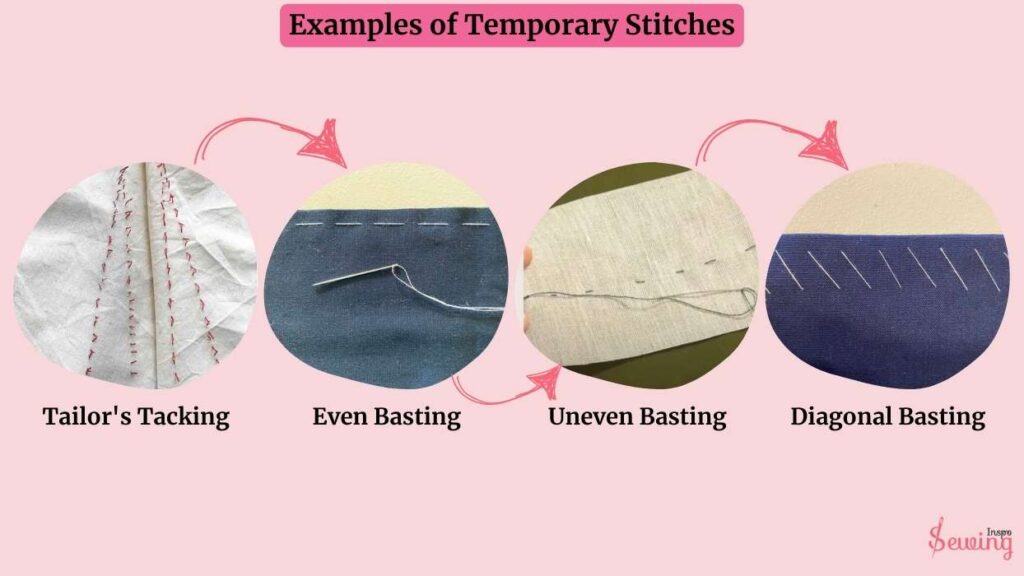
Tack In Outfit Meaning
Tack in outfil can have a couple of meanings. In sewing, it refers to quick, temporary stitches used to hold fabric layers together before final stitching or to reinforce stress points, such as pocket corners.
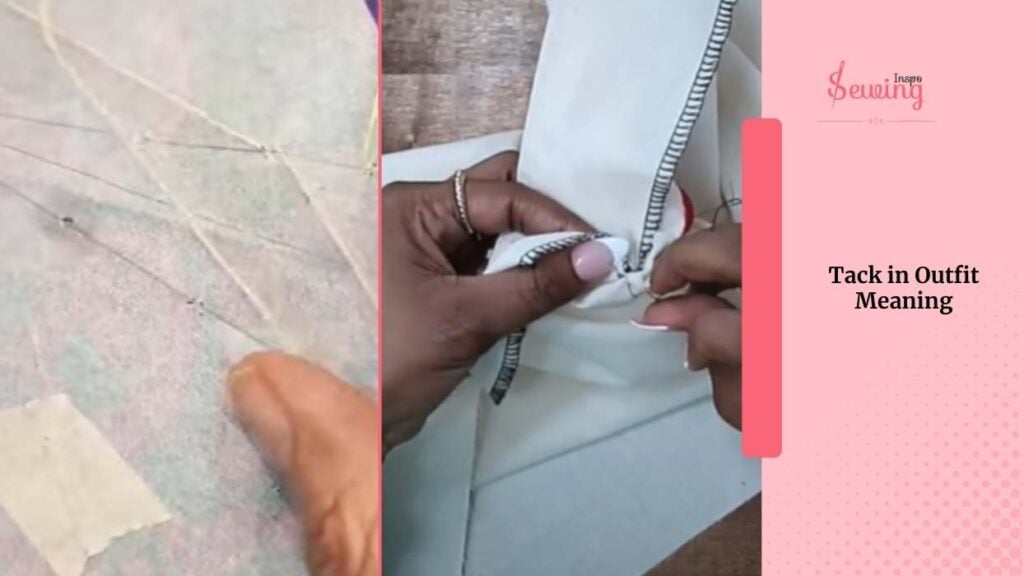
In fashion, “tacky” describes clothing that is overly flashy, gaudy, or in poor taste.
Temporary Stitches Examples With Pictures
Knowing the types of temporary stitches makes my embroidery work easy. You should know them too.

But knowing the names isn’t enough. So see these pictures,
Types Of Tacking Stitches
There are 15 types of tacking stitches such as:
- Regular Tacking Stitches
- Tailor’s Tacking Stitch
- Even Tacking Stitch
- Uneven Tacking Stitch
- Diagonal Tacking Stitch
- Slip Tacking Stitches
- Long Tacking Stitch
- Short Tacking Stitches
- Machine Tacking Stitch
- Tie Tacking Stitch
- Cross Tacking Stitch
- French Tack Stitch
- Arrow Head Tacking Stitch
- Bar Tacking Stitch
- Pin Tack Stitch
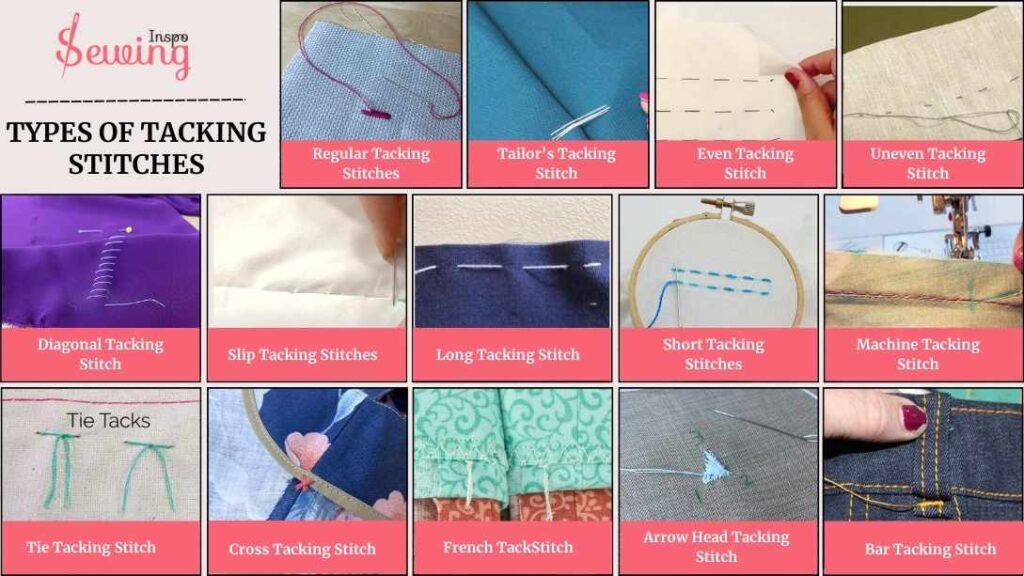
Now let’s get into the details of examples of temporary stitches with pictures.
Regular Tacking Stitches
Regular tacking stitches are super simple like running stitches, evenly-spaced running stitches that you use temporarily to hold fabric pieces together. This is the most common tack sewing.
This is the most basic stitches type among two types of tacking stitches. If you’re doing it by hand, just thread a needle with a contrasting color thread so it’s easy to see and remove later. Make small, straight stitches about 1/4 to 1/2 inch apart through the fabric layers.
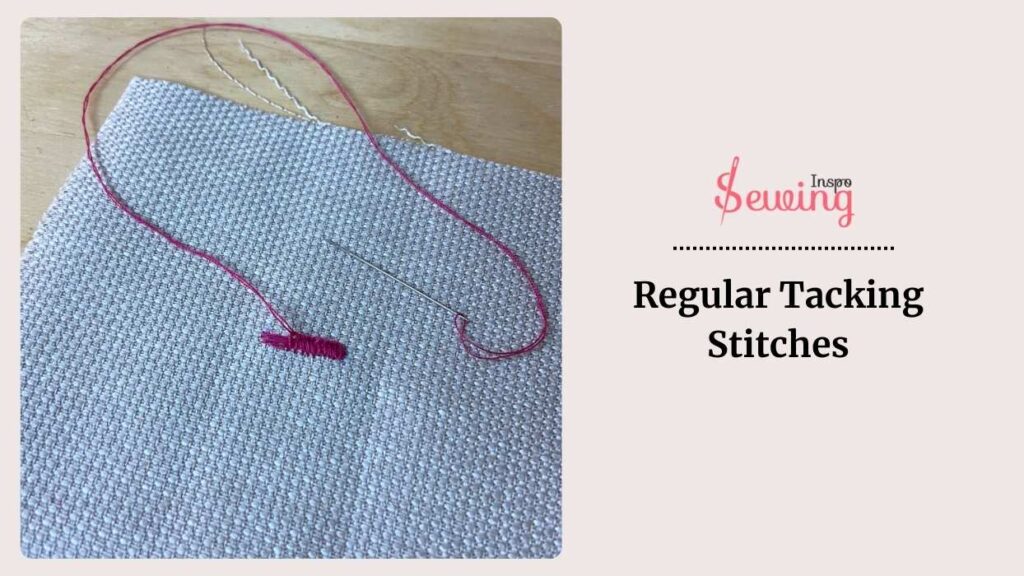
When you’re done, either tie a small knot on the backside or leave a tail if you’re planning to remove the stitches soon. . That’s the beauty of types of tacking stitches.
Tailor’s Tacking Stitch
Tailor’s tacking is a type of basting stitch where you use a double thread to stitch through 2 layers of fabric. This is like doing an overcast stitch by hand.
After stitching, you cut the thread between the layers, leaving large looped stitches in each piece. These loops help mark seam lines and important points without damaging the fabric, making it easy to match everything up correctly. Tailor’s tack is easy to stitch to tack fabric whenever you want.
And, the fun part is,
You can do tailor tack stitch in 2 patterns.
- Loss
- Loop

-Which one is easier, Grandma?
-I like loop tailor tack stitch. This tacking sewing is perfect for temporary stitches.
Even Temporary Stitches By Tacking
An even tacking stitch is like a loose, long stitch used in sewing to hold fabric pieces together temporarily before you do the real stitching. It’s called “even” because both sides of the stitch look the same. This one kinda looks like a straight stitch.

Here are some grandma tips to make it easier:
For the stitch length, go about 1/2 to 3/4 of an inch. And don’t tug the thread too tight while you’re sewing, or your fabric might get all bunched up. When you’re tacking a seam, place the stitches about 1/16 inch (that’s about 2 mm) away from the actual stitching line of the garment. This way, it’ll be a snap to remove them later when you’re ready for the final stitches.
Temporary Stitches By Uneven Tacking
Uneven tacking is a temporary stitching method used in sewing. Unlike even tacking, where the stitches are evenly spaced, uneven tacking involves irregularly spaced or sized stitches. This is perfect for the seam line.
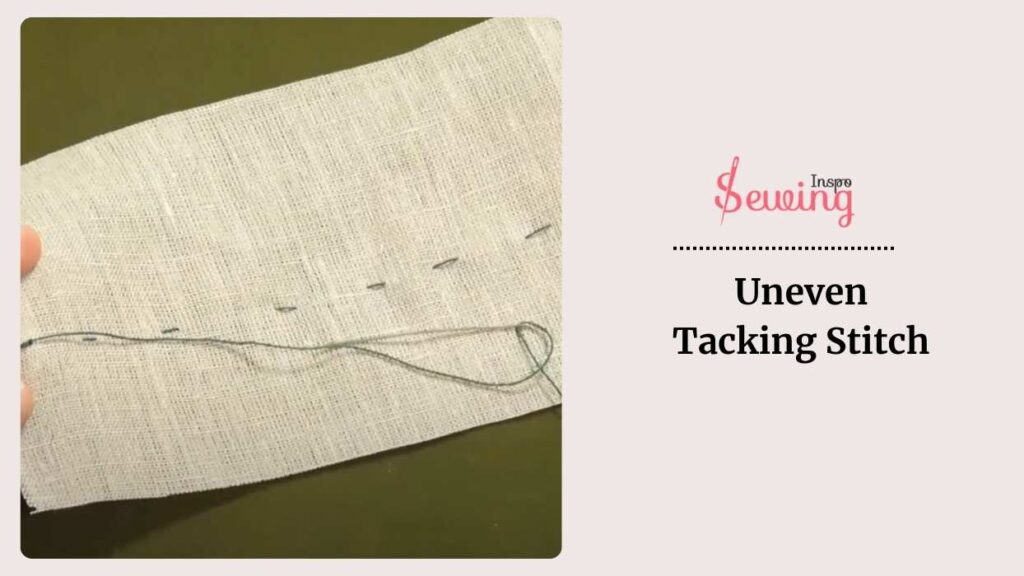
This can be done intentionally to provide a temporary hold to fabric pieces before permanent stitching or to create an effect in the fabric. It’s a bit more freeform compared to even tacking and can be used for various sewing projects depending on the desired outcome.
Diagonal Tacking Stitch
Diagonal tacking stitch holds fabric layers together in sewing, visible as long diagonal stitches on the right side and short ones on the wrong side. Leaving some slack helps in final adjustments.
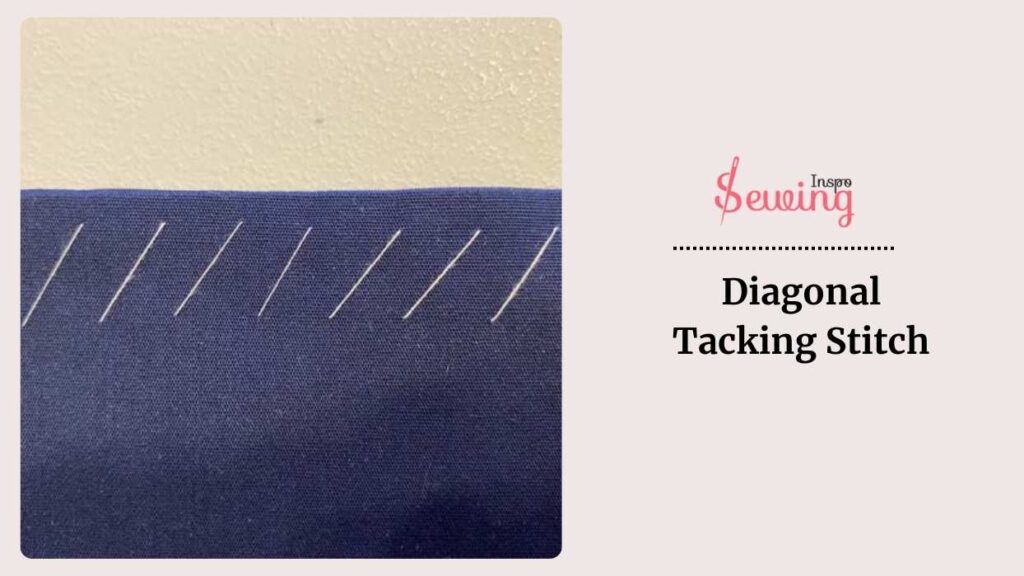
This technique is often used in tailoring to keep the fabric layers from shifting and to provide additional stability. This kind of looks like a saddle stitch. This can be vertical stitches. but diagonal tacking can help maintain the shape of a garment during construction and makes it easier to handle the fabric when sewing permanent seams.
It’s a simple but effective method that adds precision to the sewing process.
Slip Tacking Stitches
Slip tacking stitches catch only a few threads of the fabric on the top layer, making the stitches nearly invisible from the right side. Slip stitch hand sewing is often used for tasks like matching patterns or plaids, where you want the stitches to be inconspicuous.
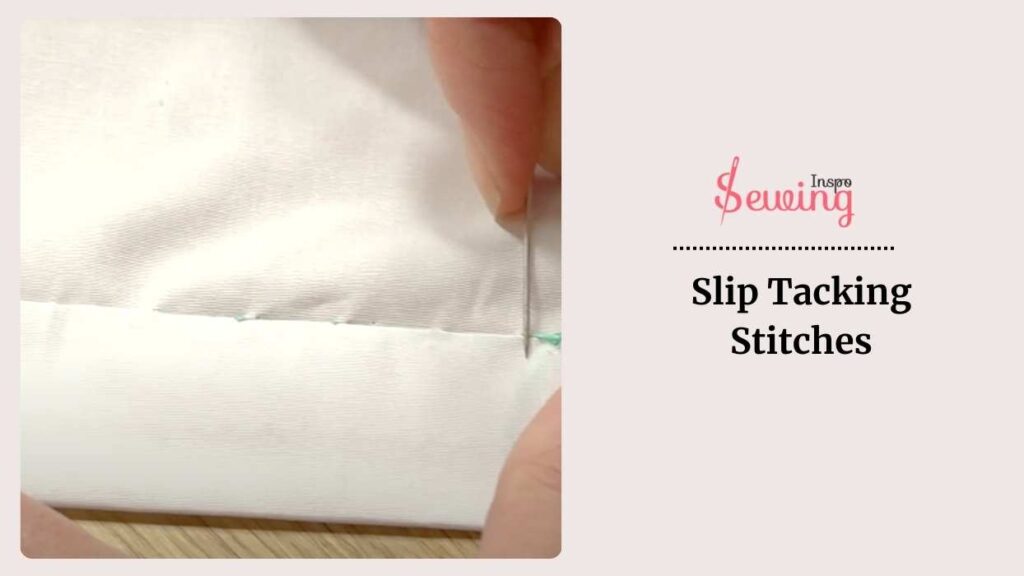
Slip tacking provides a secure hold while maintaining the neat appearance of the fabric.
Slip tacking stitch is mainly used in repairing a seam, hem, or attaching a binding.
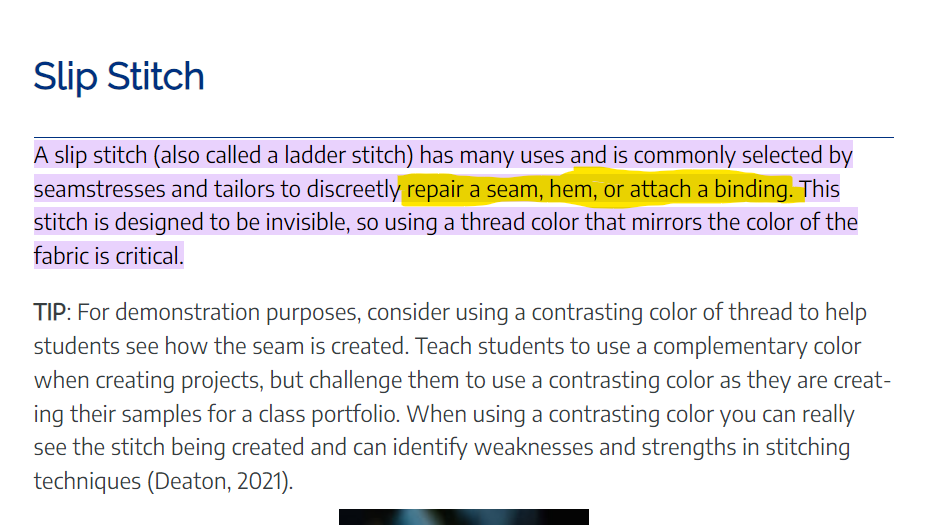
Wanna know how to do slip tacking stitches? Well, then follow the steps,
- Fold the hem about ¼ inch and press it to create a crispy edge.
- Thread your needle with a piece of thread 2–3 times the length of the hem, tie a knot at the end.
- Insert the needle through the hem fold from the back, hiding the knot.
- Work along the folded edge, picking up a tiny bit of the base fabric and exiting just under the fold.
- Keep stitches ½ inch apart for a clean, discreet finish.
- pull the thread to create a loop for the final stitch, then pass the needle through the loop to form a knot.
- Repeat once for extra security, trim the excess thread, and you’re done!
Long Tacking Stitch
Long tacking refers to a temporary stitching method in sewing where longer stitches are used to hold fabric pieces together.
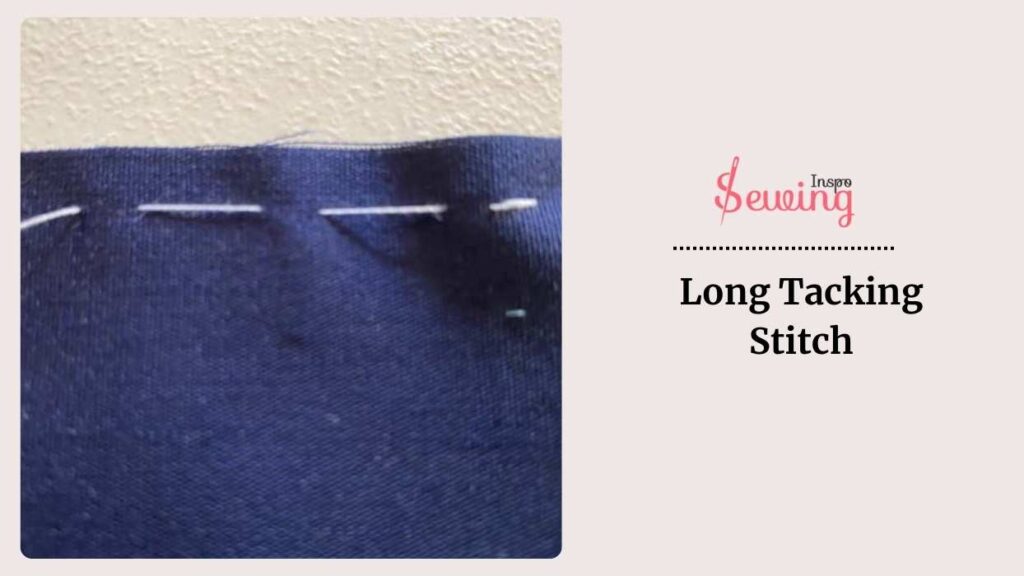
These stitches are typically larger than regular basting stitches and are often employed when a more secure temporary hold is needed.
Long tacking is useful for holding fabric layers in place during fitting or construction stages before permanent stitching is done. It provides stability without requiring as much time or effort as permanent stitches, making it a handy technique in sewing projects.
here is basting stitch picture sample!
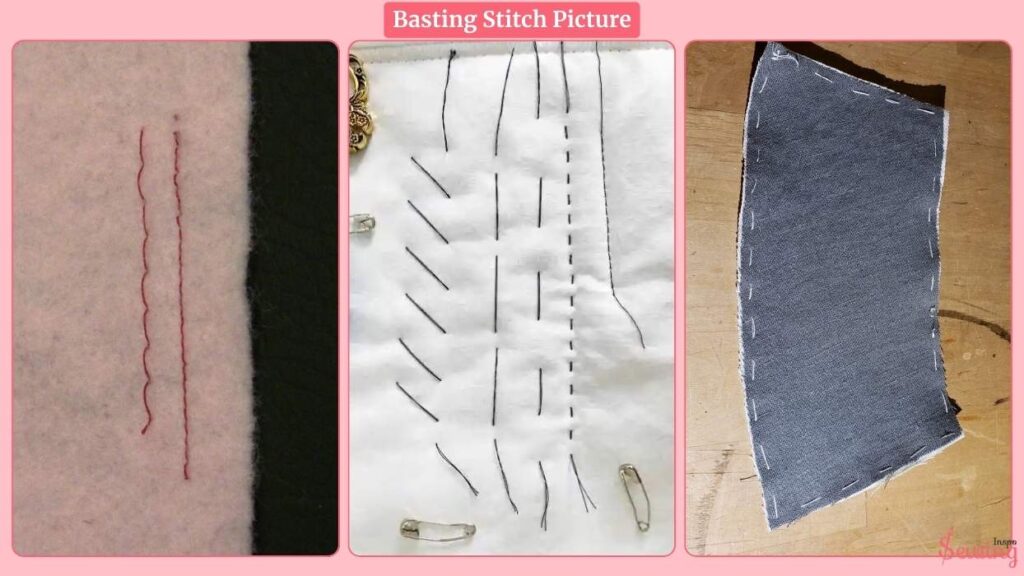
Short Tacking Stitches
Short tacking is smaller and closer together compared to regular basting stitches. This is a form of free style embroidery stitch. And the most common stitch.
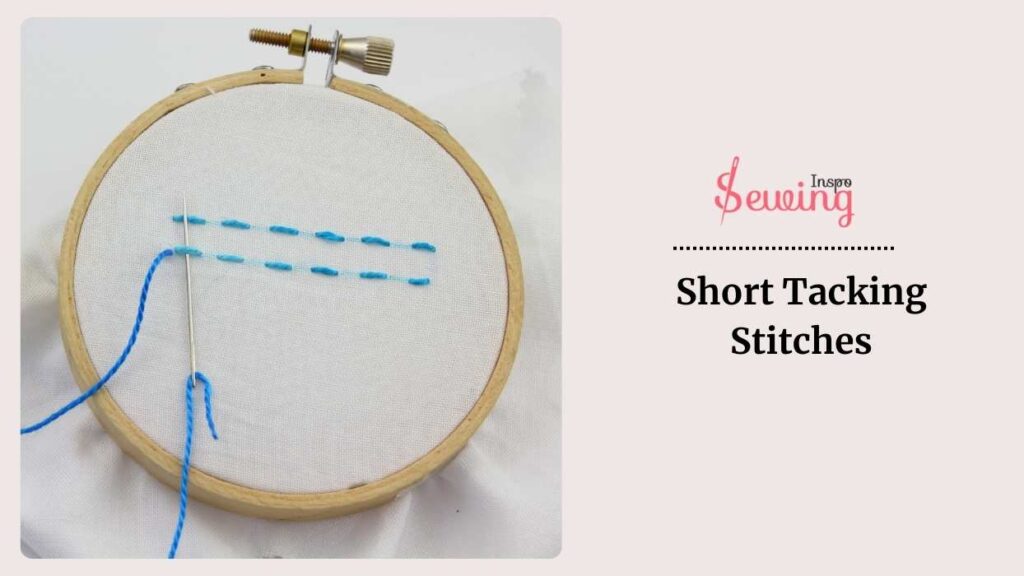
Short tacking is often used for precise or delicate work, such as securing fabric layers before final stitching or creating temporary markers for adjustments. This kinda reminds me of pick stitch. It provides a secure hold without being too visible and is easily removed once it’s no longer needed, making it a versatile technique in sewing projects.
Machine Tacking Stitch
Machine tacking is like using a sewing machine to make temporary stitches. It’s a quicker and more efficient way compared to hand tacking, especially for big projects.
Sewing machines have different machine stitches options you can adjust to make these temporary holds, depending on how long and tight you want them. While it’s often used in factories for making clothes, it’s also handy for sewing at home.
Tie Tacking Stitch
The tie tacking stitch is a method used to secure the back blade of a necktie to the front, ensuring that the tie keeps its shape and doesn’t shift during wear.
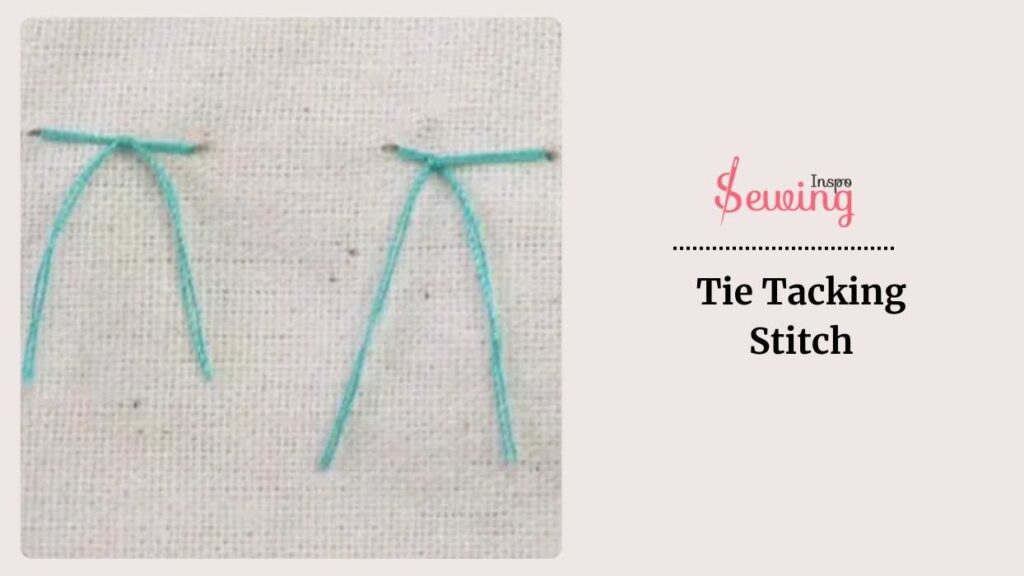
According to merriam-webster,
A tie tack is like a fancy pin with a button or clasp. It’s used to hold the two ends of a necktie together or to fasten a tie to a shirt. It adds a nice touch to your outfit while keeping everything in place.
It’s a simple strong stitch that’s typically hidden beneath the label of the tie, helping to maintain a clean and polished appearance. Just like hemming stitches do.
Cross Tacking Stitch
Cross-tacking stitches are creating stitches in an x pattern to temporarily hold fabric layers together.

It’s often used for securing seams or folds in place before permanent stitching.
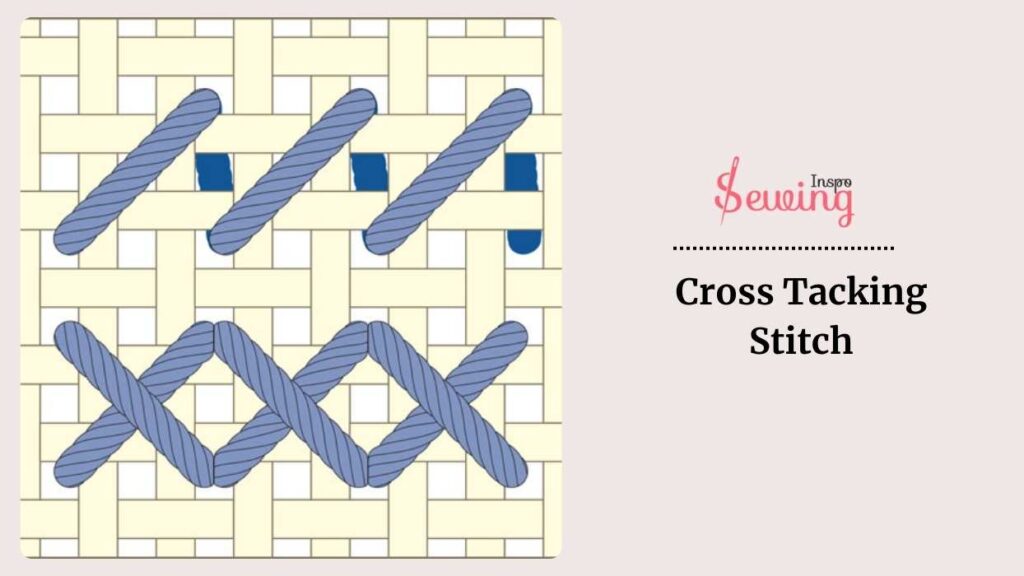
This cross-stitch provides extra stability and prevents shifting of fabric during the sewing process. This process is kinda similar to hand sew buttonhole. Once the final stitches are in place, cross-tacking stitches can be easily removed. It’s a handy method for ensuring precise and secure sewing results.
French TackStitch
French tack is this invisible bond that joins 2 layers of fabric in a garment without being all obvious about it. It is a sneaky little trick in sewing. You usually do it by hand, hiding it in the seam allowances. People like to use French tacks at spots like the hem of a skirt, the waistline, or the bottom of armholes.
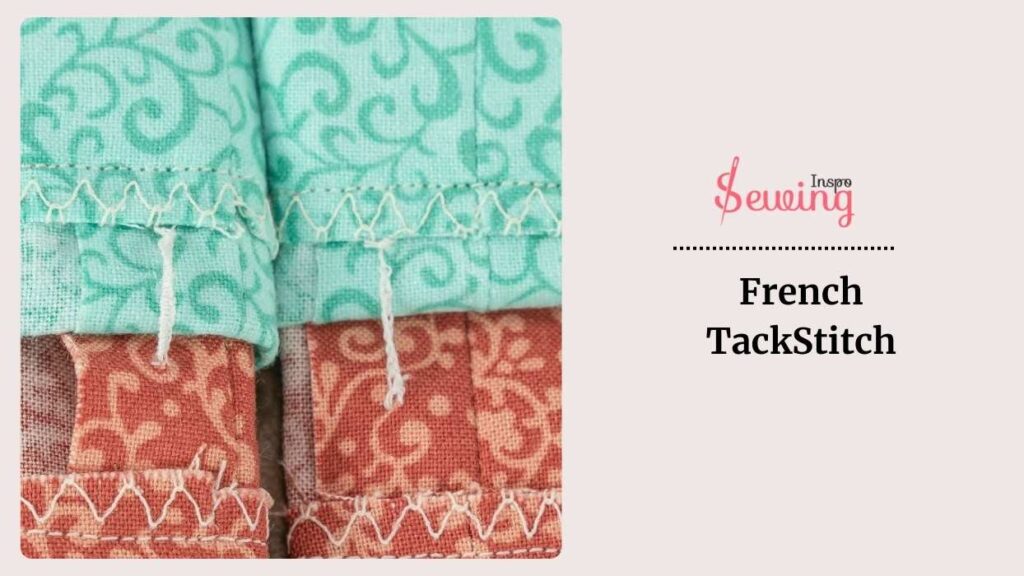
The cool thing about French tacks is that they let the 2 layers of fabric move separately while still staying connected.
To make one, you do blanket stitches across a bunch of threads to create a little bar. Some folks say French tacks are stronger and fancier-looking than chain tacks, but chain tacks are easier to pick up. This will make your blanket stitch by hand easy.
Arrow Head Tacking Stitch
Arrowhead tacking is like a special sewing move that makes these cool temporary stitches look like little arrowheads. It looks like an overcast stitch. It’s super handy because it holds fabric in place really securely but is also easy to take out when you’re done. You’d use this technique when you need things to stay put just right before you do the real sewing.

Arrowhead teck stitch like triangle-shaped tack stitch is a handy sewing technique used to strengthen specific parts of clothing, to stop them from tearing. It’s also a cute decorative stitch often seen in embroidery. So, not only does it add extra durability where needed, but it also adds a bit of flair to your sewing projects.
These stitches usually stand out because they’re made with a different color thread. Once you’re all done with the final stitching, you can just remove the arrowhead tacking stitches, and your sewing project looks all polished and pro. It’s a neat trick that combines accuracy and convenience in sewing jobs.
Bar Tacking Stitch
A bar tack is basically a stitch used to make seams super strong. You’ll often spot them on outdoor stuff, especially where straps meet fabric or on buckles and spots that get a lot of stress.
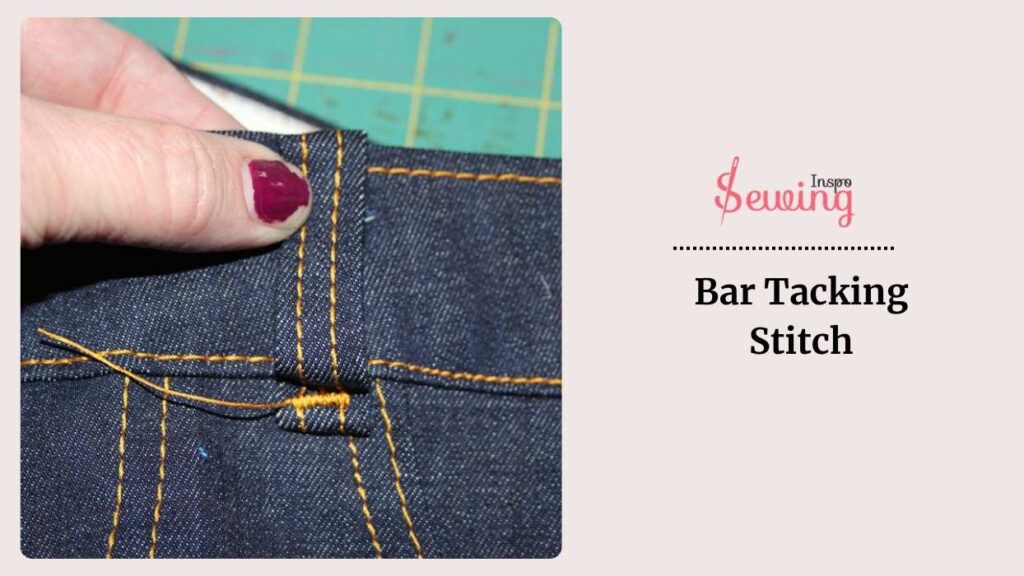
It’s a bunch of zigzag stitches all packed close together. They’re usually around 1/16” to 1/8” wide and 1/2” to 3/4” long, but the size might change depending on what you’re using them for.
However, the size isn’t certain. It will depend on your stitch purpose. You will learn when you start to do the bar tack stitch by hand.
Pin Tack Stitch
The pin tack stitch is a stitch that creates a “tacked” effect by sewing tiny, close stitches in a straight folded line. It adds a bit of texture or gathering without the bulk. Each stitch is really small—think just a couple of millimetres long. It’s usually spaced very close to the next stitch
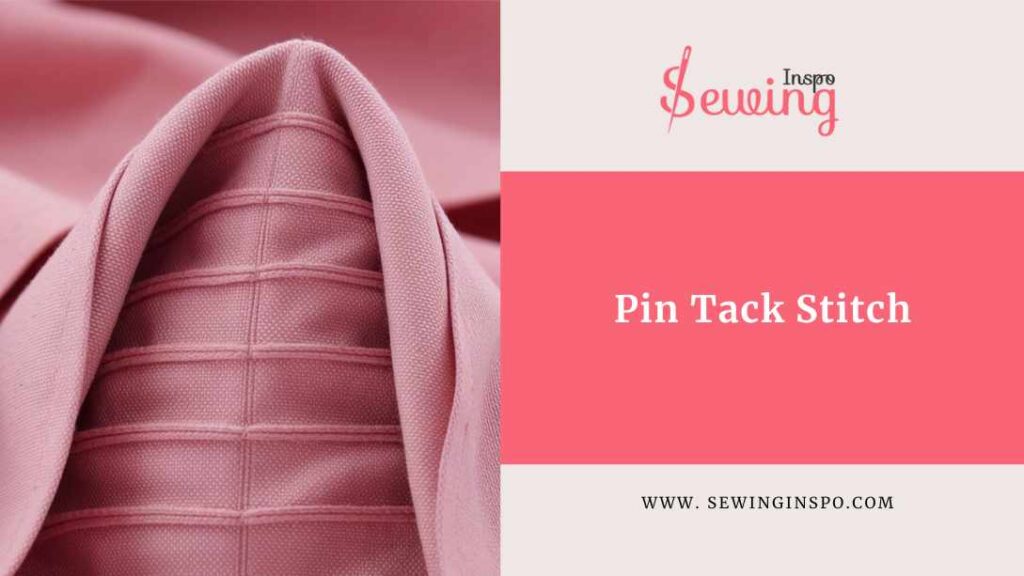
So it creates a continuous line that almost looks like a seam but with a soft, refined texture. When you see pin tacks, they add a gentle ripple or texture to the fabric that feels almost decorative but without being too bold.The look kinda resembles a stitch pick.
This stitch works especially well on lightweight fabrics like cotton and silk, where the fine, evenly spaced pintacks can stand out and add a delicate touch.
How To Do Tacking Stitch?
To do a tacking stitch, start by threading a needle with a contrasting single thread and knotting the end. Then, make long, straight stitchesthrough the layers of fabric you want to temporarily hold together. Space the stitches evenly, about 1/4 to 1/2 inch apart.
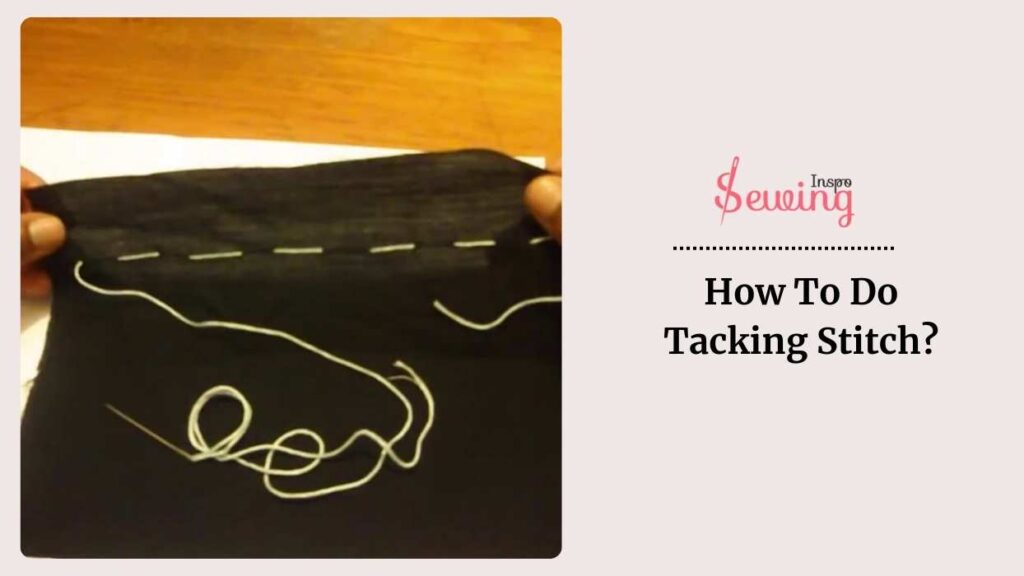
Once you’ve tacked the area, secure the thread with a knot on the backside of the fabric or leave a tail for easy removal later. Tacking stitches are great for holding fabric in place while you sew, and they’re easy to take out once you’re done.
Not enough right? I know that’s why I have written an article covering every type of tacking stitch process. Read it out.😜
Examples Of Temporary Stitches
After learning the tacking stitch, I did it often here and there. I took it as practice, but it turned out to be fun. 😁
Tacking stitches are used to temporarily hold fabric, mark sewing lines, or position pieces before final stitching. Here is my tacking stitch work: I hope my tacking stitches examples will inspire you too.
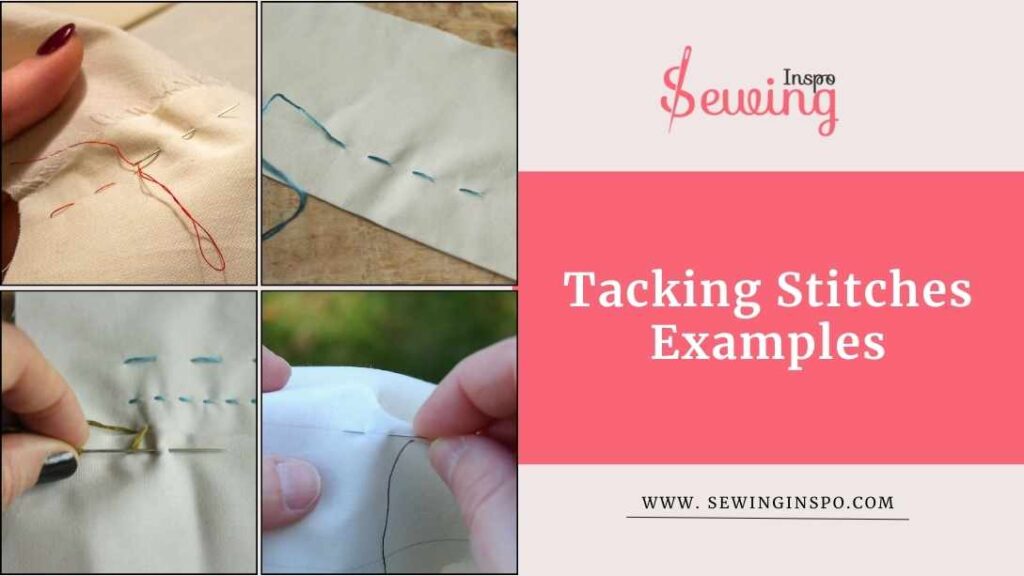
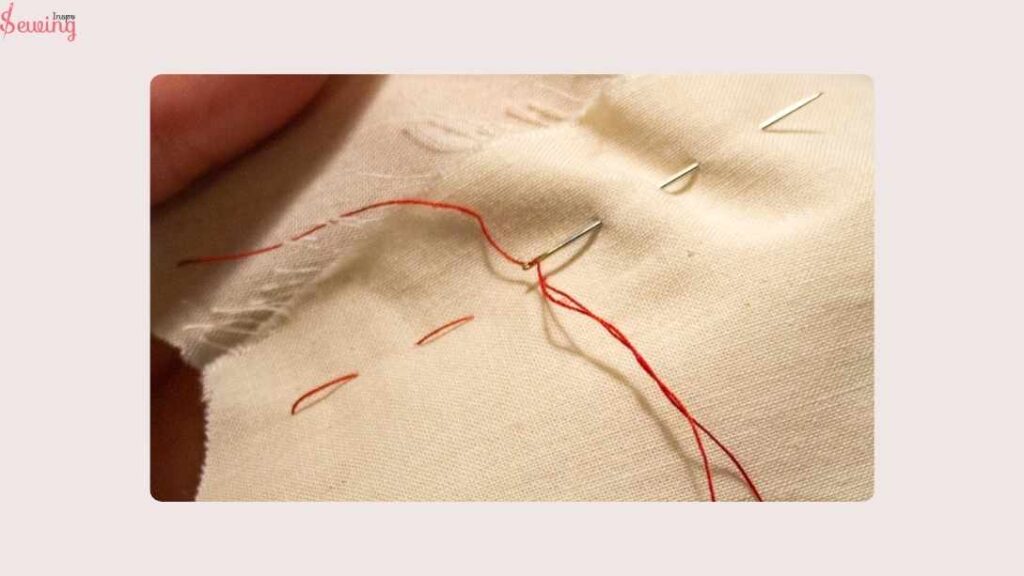
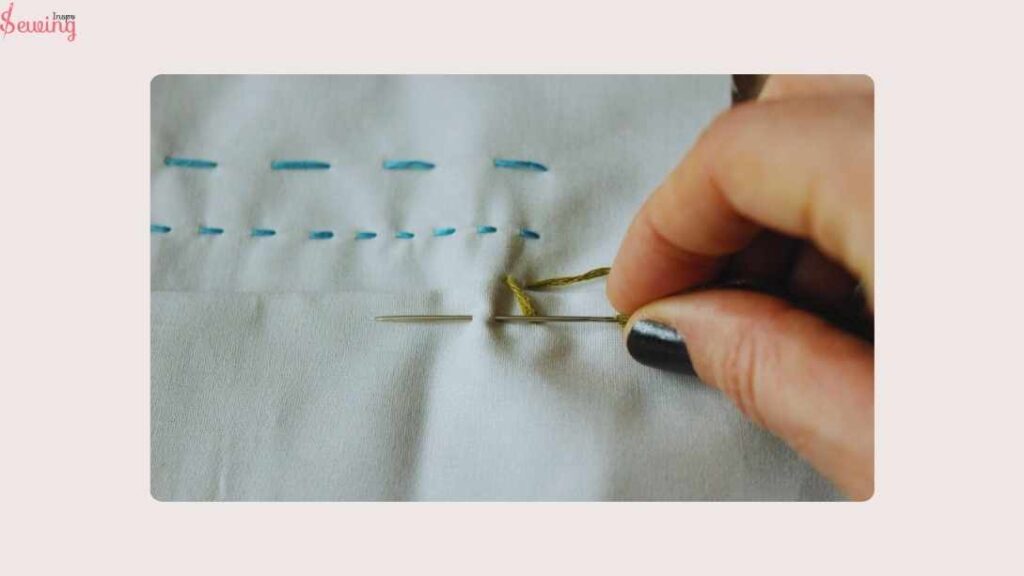
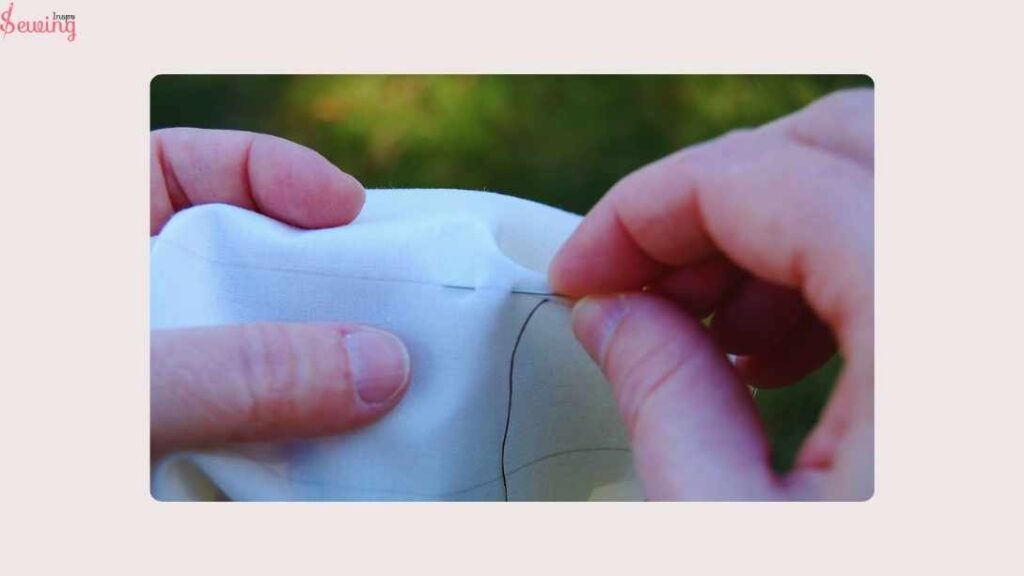
Types Of Tacking Stitches In Sewing In One Video Tutorial
Ever wanted to see all types of tacking stitches in one video? Then we got you covered. We heard your request and made a video of the all tacking stitch. All the temporary stitches examples have been placed in a video.
Watch this video you will get a clear idea of tacking stitch.
Types of tacking stitches in sewing video tutorial
Temporary Stitches Frequently Asked Questions (FAQ’s)
What Are The Two Types Of Tacking?
The two main types of tacking are hand tacking and machine tacking. Hand tacking involves using a needle and thread to create temporary stitches to hold fabric pieces together, while machine tacking utilizes a sewing machine to achieve the same result with quicker, automated stitches. Both methods serve the purpose of temporarily securing fabric layers before permanent stitching.
What Is Tacking Stitch An Example Of?
A tacking stitch is an example of a temporary stitch in sewing. Temporary stitches are used to temporarily hold fabric pieces together before permanent stitching, such as basting stitches, tailor’s tacks, or thread tracing. Once the final sewing is done, these temporary stitches are typically removed.
Final Talk
Now you know all types of tacking stitches, right? So, tell me which tacking stitches you find the most interesting. If you are on wanna learn more about it then stay with sewing inspo.

